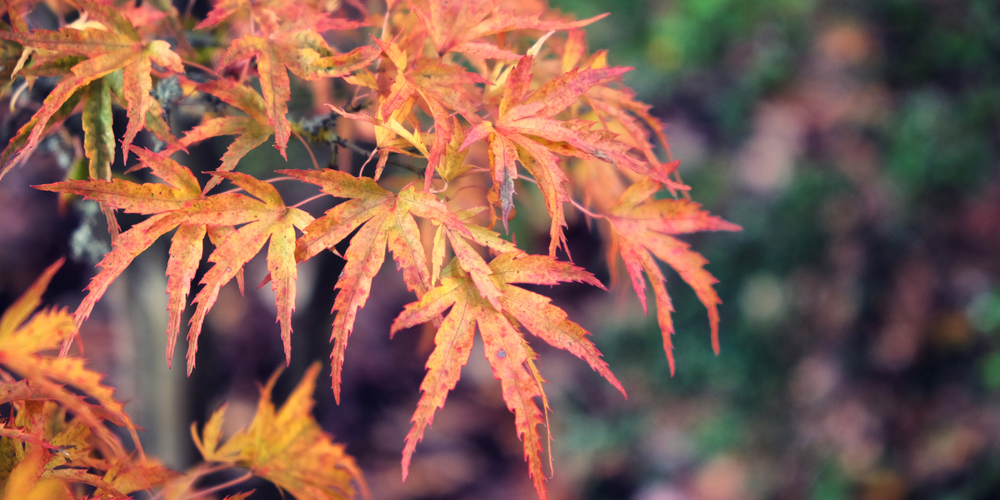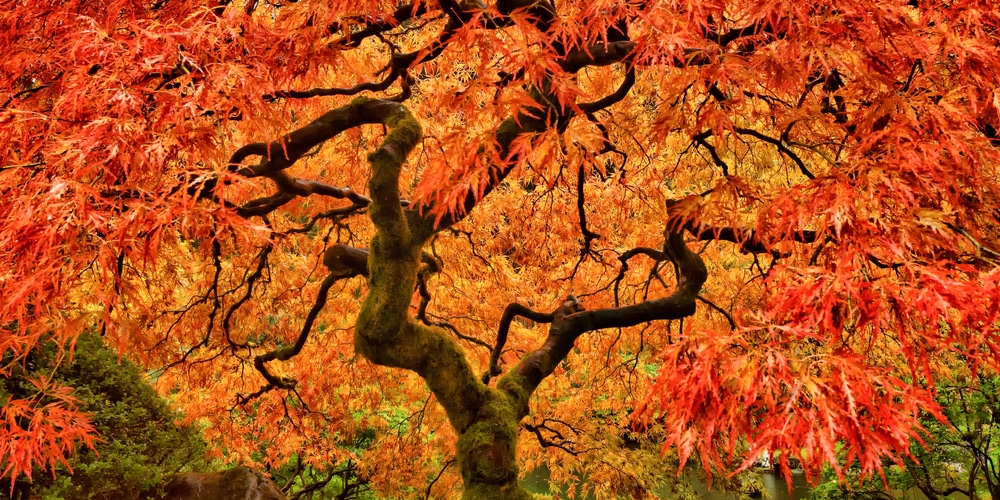Japanese Maple is a beautiful tree to have in the growing season, but at the onset of the cold season you may wonder, ‘will my Japanese Maple come back after frost?’
The temperate species, Acer palmatum and Acer japonicum, require winter dormancy each year to grow well. The good news is that frost won’t likely kill your Japanese maple but it may cause some of the branches and leaves to die back.
Let’s find out if a hard frost can kill a Japanese Maple and the methods you can use to protect your tree.
How Much Frost Can a Japanese Maple Handle?

The Japanese Maple grows well in USDA zones 5 through 8, with the Acer japonicum species able to withstand frost better than its palmatum cousins.
If you live within the recommended growing zone then you shouldn’t have any problems with frost and the freeze killing your precious plant.
These trees enter a period of dormancy at the end of fall and through winter. If there are no leaves and the sap doesn’t flow to its extremities, the Japanese Maple can survive even prolonged sub-freezing temperatures without breaking a sweat.
The Acer japonicum is known to tolerate frost temperatures at minus 20 degrees F (zone 5), while the Acer palmatum can withstand frost temperatures at minus 10 degrees F (zone 6). Japanese maples do not grow well in subtropical areas where winters do not go below 25 degrees F.
Japanese Maple trees can handle frost pretty well when they’re established and healthy. Your tree has a high chance of ‘coming back’, or growing new buds after frost and decorating your landscape with beautiful foliage that changes with the season.
Will My Japanese Maple Recover From Frost Damage?
This incredible tree is hardier than you’d think. Japanese Maple is known to survive tough and prolonged frost periods and come out relatively unscathed.
Frost damage due to freezing temperatures will likely only cause surface damage. The Japanese Maple’s leaves might turn black or brown, then shrivel as a response to winter frost.
Branches might also die back. Furthermore, any new growth put out by your Japanese Maple is likely to be affected and experience the same dieback if it’s caught by a surprise frost in the spring or fall.
Also, freeze-damaged Japanese Maples will usually produce new growth on healthy branches, although it might not be as strong. Frost while the tree is actively growing will damage its extremities, but in periods of dormancy, the tree won’t get damaged.
How to Protect Japanese Maple From Frost
A fall freeze is usually not a cause for concern since the Japanese Maple is winding down and preparing to go into a state of hibernation. You’ll experience this firsthand with colorful leaves dropping as temperatures get colder.
Early frost during the spring season will not damage Japanese Maple, although it will make the tree lose leaves faster.
Winter care is generally minimal for Japanese Maples. The tree won’t need any special covering or trunk wrap- it’s recommended that the cold temperatures reach all the parts of the Japanese Maple to prevent it from sprouting new growth prematurely.
Don’t worry about your tree getting exposed to the rain or snow because it will likely survive these natural occurrences.
Once spring comes around, do a quick inspection and identify which branches have been affected. Use clean pruning shears to remove dead portions and cut back to the main stem or larger branch sections.
If your tree puts out weak or spindly growth, don’t trim them off all at once- cut only the ones that are going towards the center or upwards and leave the outward-facing buds alone.
For spring frosts it’s recommended that you cover the Japanese Maple with a frost cloth or an old bed sheet to try and save the new growth and prevent unwanted stress.
Final thoughts
If you’re growing Japanese Maple in a container then you can overwinter, or put the tree inside the garage or your house to keep it from sustaining frost damage.
You can also replant your Japanese Maple to a more sheltered location, such as near a patio or brick wall to keep the tree from being too cold.
Related Article: How to Plant a Japanese Maple in Clay Soil?

